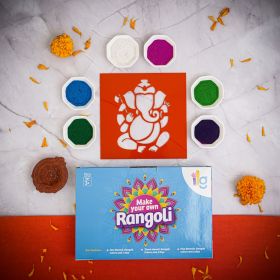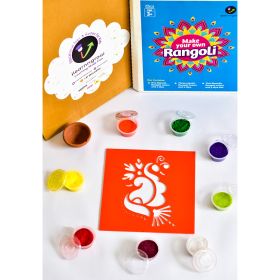Learn the Story of Dhanteras: Meaning, History and Significance

Dhanteras 2025 will be celebrated with the same devotion and joy that millions of families show every year. This day marks the beginning of Diwali, the biggest Hindu festival, and carries deep cultural as well as spiritual meaning. But many people often ask: Why do we celebrate Dhanteras? What is the true Dhanteras story? And what is the history behind this day that is filled with lights, prayers, shopping, and traditions?
Understanding Dhanteras' history helps us appreciate this beautiful festival even more. It is not just about buying gold, silver, or utensils, but also about the blessings of health, prosperity, and happiness for the family. In fact, when we wish each other Happy Dhanteras, it is a reminder of centuries-old faith and stories passed down through generations. This blog will take you through the story of Dhanteras, its history, rituals, symbolism, and why it continues to matter so much in 2025 and beyond.
What is Dhanteras?
Dhanteras, also called Dhanatrayodashi, is the first day of the five-day Diwali celebrations. The word "Dhanteras" comes from two Sanskrit words:
- Dhan, meaning wealth
- Teras, which means the thirteenth day of the lunar fortnight
It falls on the thirteenth lunar day of Krishna Paksha (the dark fortnight) in the month of Kartik. On this day, people worship Lord Dhanvantari, the God of Ayurveda and healing, and also Goddess Lakshmi, the goddess of wealth. It is considered one of the most auspicious days to buy new items, especially metals like gold and silver.
The Story of Dhanteras
The Dhanteras story is rooted in two important legends from Hindu mythology. These stories are why this day holds such strong meaning in Indian households.
1. The Legend of Lord Dhanvantari
According to ancient scriptures, during the great cosmic event of Samudra Manthan (the churning of the ocean), several divine treasures emerged from the ocean. One of them was Lord Dhanvantari, who appeared with a pot of Amrit (nectar of immortality). He is considered the founder of Ayurveda, and his arrival is celebrated as Dhanteras.
This story highlights health as true wealth. On Dhanteras, people not only pray for financial prosperity but also for good health and a long life.
2. The Story of King Hima’s Son
Another famous legend explains why people light lamps on Dhanteras night. Long ago, there was a young prince who was predicted to die from a snake bite on the fourth day of his marriage. His clever wife, determined to save him, placed gold ornaments and silver coins in heaps around the bedroom entrance. She also lit countless lamps to keep the room glowing all night.
When Yama, the god of death, arrived as a serpent, he was blinded by the dazzling glow of metals and lamps. Instead of entering the room, he sat outside, listening to the stories and songs sung by the bride. By morning, the time of death had passed, and the prince’s life was spared. Since then, people light rows of lamps and buy precious metals on Dhanteras as a symbol of warding off misfortune.
Dhanteras History and Cultural Roots
The Dhanteras history goes back thousands of years. Both Ayurveda and Hindu Puranas talk about wealth not only in terms of money but also in terms of health and knowledge. The day symbolizes balance: material prosperity (Goddess Lakshmi) and health (Lord Dhanvantari).
In ancient times, kings and traders would buy new coins, utensils, and ornaments as a way of inviting prosperity into their homes. Farmers would sharpen tools and prepare for the winter harvest. Over time, these practices became traditions, and today, Dhanteras is seen as a day when buying new items is believed to bring luck and blessings.
Why Do We Celebrate Dhanteras?
The simple answer is: we celebrate Dhanteras to invite health, wealth, and prosperity into our lives. But the deeper reasons include:
- To honor Lord Dhanvantari: As the father of Ayurveda, his blessings are sought for good health.
- To worship Goddess Lakshmi: The goddess of fortune and wealth is welcomed into homes with lamps and prayers.
- To remember Yama’s mercy: Lighting lamps is a way of protecting loved ones from negative energies and untimely death.
- To strengthen family bonds: Dhanteras shopping, decoration, and rituals bring families together.
So, when you wish someone Happy Dhanteras, you are not just wishing them wealth, but also good health, safety, and joy.
Rituals of Dhanteras
Each region of India has its own traditions, but the core rituals remain the same.
1. Cleaning and Decorating the Home
Homes are cleaned thoroughly before Dhanteras. Rangolis are drawn, and small lamps are lit near the entrance. This is believed to invite Goddess Lakshmi.
2. Buying Metals
On Dhanteras, people buy utensils, silver coins, or jewelry. In many families, even small items like a steel spoon or a copper bowl are purchased. The belief is that this brings prosperity for the whole year.
3. Lakshmi Puja and Dhanvantari Puja
Families perform puja in the evening. Lamps are lit, flowers are offered, and special sweets are prepared. Some families also place thirteen lamps at the entrance to ward off evil.
4. Lighting Lamps for Yama
As per tradition, a special lamp called Yamadeep is kept outside the house to honor Lord Yama and protect the family from harm.
Dhanteras in Different Parts of India
While the essence of Dhanteras is the same, the way it is celebrated changes from place to place.
- North India: Families decorate homes with diyas and perform Lakshmi puja. Markets remain crowded as people shop for gold, silver, and utensils.
- Maharashtra: Farmers and traders worship their tools and instruments on this day.
- South India: Dhanteras is often observed as Dhantrayodashi with more focus on health rituals and Ayurveda.
- Gujarat: The day also marks the beginning of the new financial year for many business communities.
Symbolism of Dhanteras
Every ritual of Dhanteras has a symbolic meaning:
- Buying gold/silver: Symbol of prosperity and future security
- Lighting lamps: A Sign of removing darkness and bringing positivity
- Worshipping Dhanvantari: Reminder that health is true wealth
- Rangoli and decorations: Inviting happiness and fresh beginnings
Dhanteras in Modern Times (2025 Perspective)
In 2025, the way people celebrate Dhanteras is both traditional and modern. While online shopping platforms offer deals on jewelry, electronics, and utensils, the spirit remains the same—welcoming prosperity. Families also combine traditional prayers with modern ways of celebrating, such as eco-friendly diyas, digital pujas, or gifting plants instead of only sweets.
Even though the world is changing, the essence of Dhanteras remains rooted in the same values: wishing good health, fortune, and happiness for loved ones.
Lessons from the Dhanteras Story
When we look at the Dhanteras story closely, we realize it carries timeless lessons:
- True wealth is not just gold but health and family happiness.
- Light has the power to defeat darkness.
- Faith and cleverness, like the bride in King Hima’s story, can change destiny.
- Prosperity comes when we balance material wealth with spiritual well-being.
How to Celebrate Dhanteras 2025 Meaningfully
If you want to celebrate Dhanteras 2025 in a meaningful way, here are a few ideas:
- Buy something useful: Even a small utensil or plant counts.
- Do a health check-up: Honor Lord Dhanvantari by taking care of your body.
- Light diyas mindfully: Remember the story of Yama and the prince.
- Spend time with family: Share stories of the festival with children so they learn the value of traditions.
- Give back: Donate food, clothing, or household items to those in need as a way of sharing blessings.
Dhanteras is more than just a shopping day. It is a reminder of health, wealth, safety, and joy. From the story of Lord Dhanvantari bringing Amrit to the tale of the young bride saving her husband’s life, the Dhanteras story carries deep lessons for all of us.
As we celebrate Dhanteras 2025, let us remember the true spirit of this festival: light over darkness, health over disease, and prosperity over misfortune. Whether you celebrate by buying gold, lighting diyas, or simply spending time with family, the essence is the same: spreading happiness and blessings.
This year, when you say 'Happy Dhanteras,' let it come from the heart, carrying the warmth of centuries-old traditions.






























